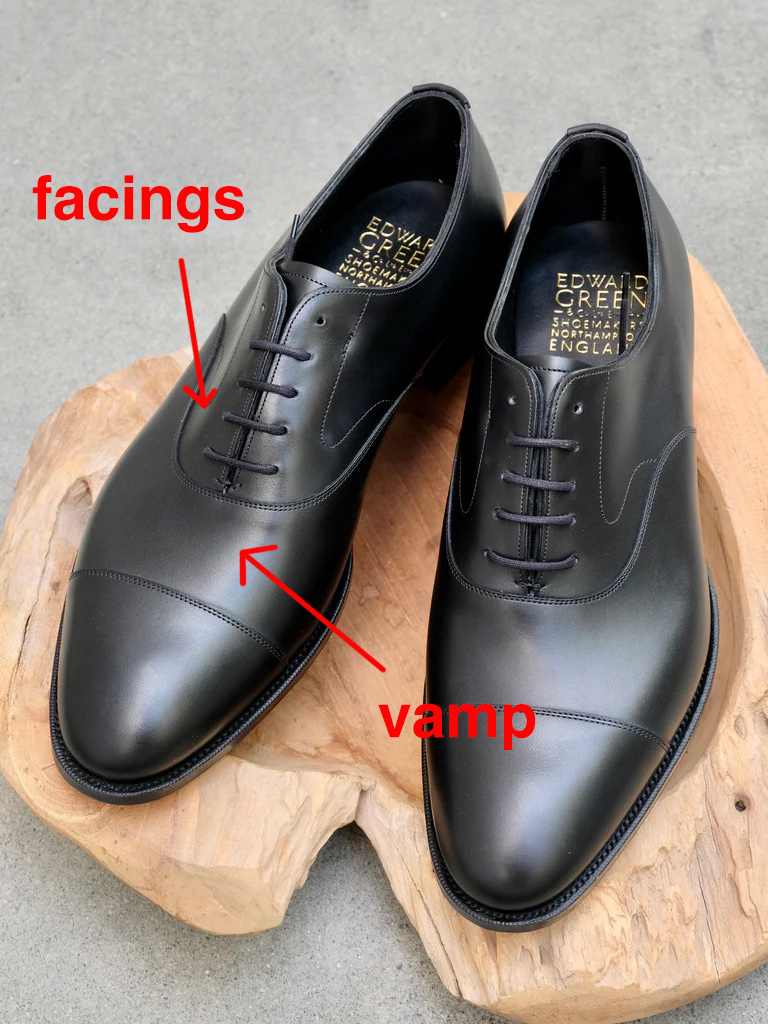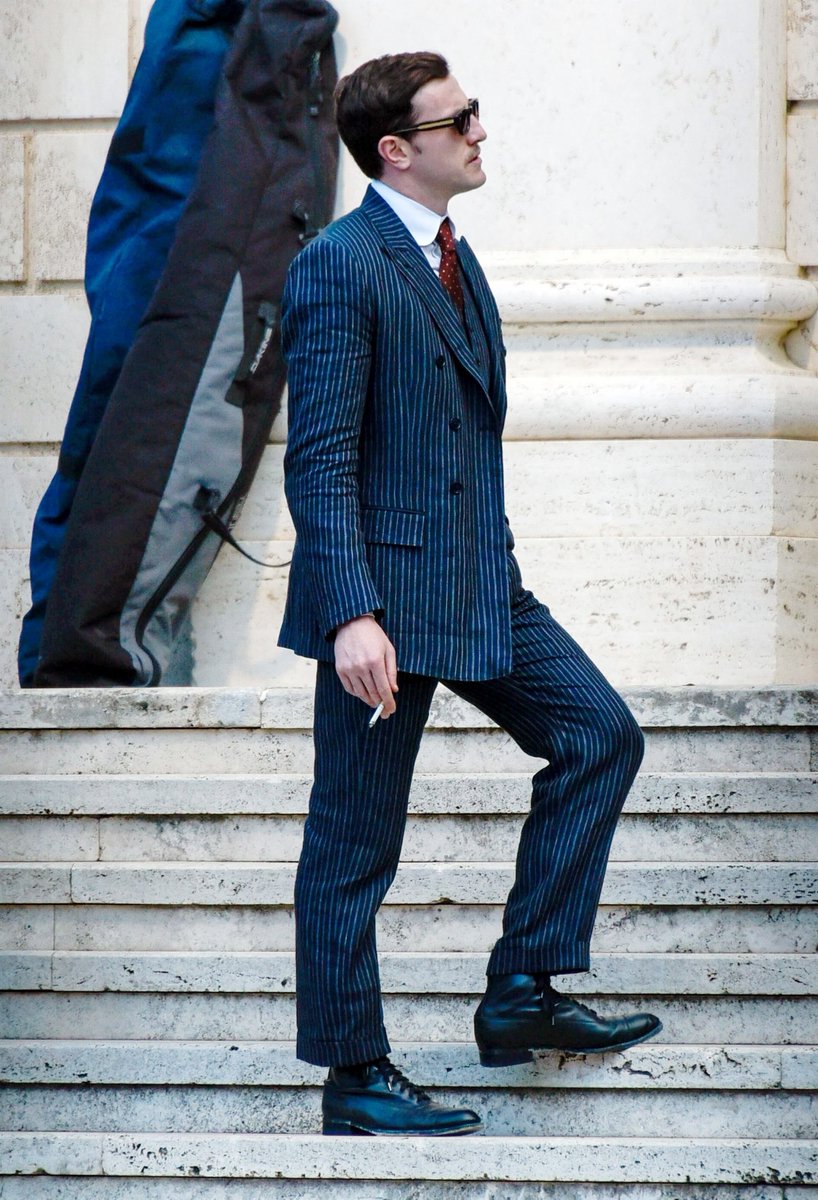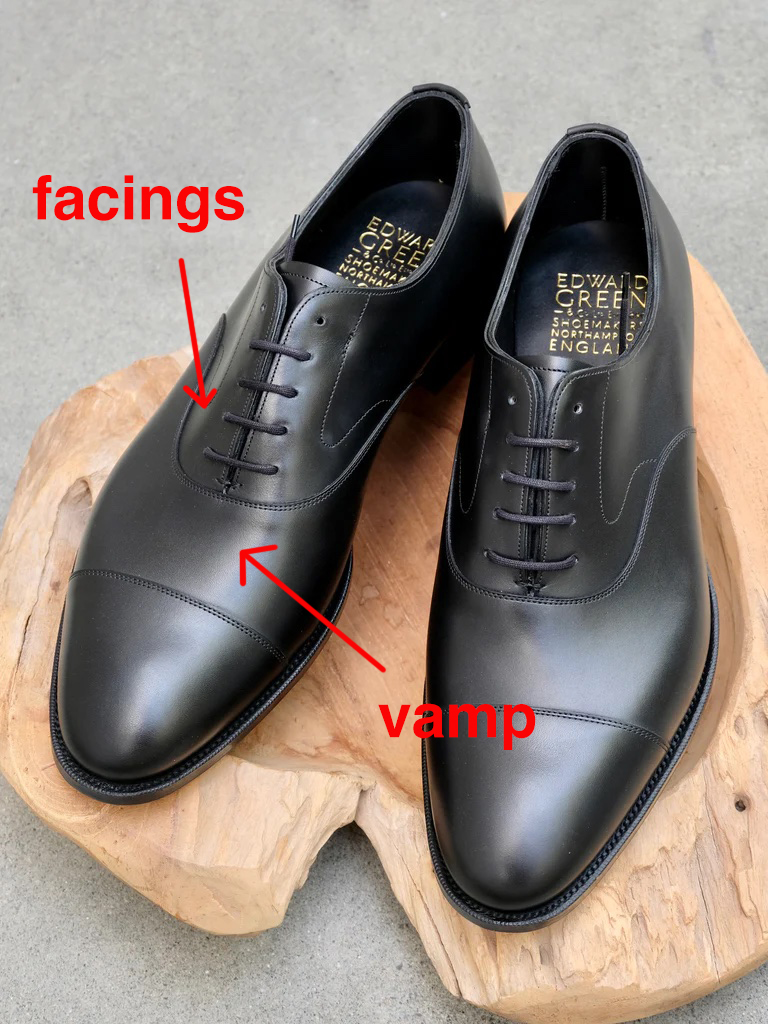https://twitter.com/dieworkwear/status/1781385968597295361
Mescal’s shoes here don’t fit very well. Here’s how to tell and how you can use this bit of information to buy better shoes when shopping. https://t.co/3SfHv6BdTF
Let’s start with some terminology. “Facings” refers to the part of the shoe that holds the eyelets (through which your shoelaces are threaded). Oxfords have “closed facings,” which means the facings are sewn under the vamp. Derbies have “open facings,” as the facings sit on top.

Mescal here is wearing a kind of closed-facing design known as a balmoral boot, which is what men wore with formal or business suits in the late 19th and early 20th centuries before the switch to “low shoes.” Notice these basically look like oxfords but in boot form

You can tell the shoes don’t fit quite right because the facings are very spread apart, such that they form an extreme V.

Compare that to these photos from about a hundred years ago of men who are likely wearing bespoke footwear. Facings don’t need to touch, as you want some wiggle room for adjustment. But they should be closer together, as you see here:

Few men today wear balmoral boots, but it can still be useful to pay attention to facings when shopping for shoes. They can be a telltale sign of fit. However, not all shoes should have facings that sit close together.
It’s again important to remember that a lot of men’s dress derives its language from a time when men had wardrobes divided between city and country. Or white-collar work versus manual trades. This forms the basis for how we understand formality in men’s attire.
Men of a certain social class wore dark worsted suits with white shirts and black calfskin oxford shoes to do business in London. They traded their clothes for tweed sport coats, whipcord trousers, tattersall shirts, and brown pebble-grained derbies while in the country.

And so, shoe designs were built for these purposes. In London, where a man might be doing business, he would present the tidiest, most sleek appearance of himself. So his shoes had closed facings.

But if he were relaxing in the country or working in the manual trades, he would opt for an open-facing design, as those allowed for more adjustability and were thus more comfortable. The Duke here is even wearing open-facing derbies with crepe soles, so they feel like sneakers

When we look at dress shoes today, some elements of their design derive from sport, leisure, or work. John Lobb in London calls the split-toe derby a “navvy cut” because they used to be worn by British navigational engineers who worked on canals, railways, and roads.

As such, when buying more formal shoes like oxfords, you want the faces to be closer together. Slightly more casual shoes, such as derbies, can sometimes be more spaced apart, depending on their design (pic 2). Today, these are all considered “dress shoes,” but they differ.

If the facings are too spread on oxfords, try a different model
My friend @shoesbynoonoo, who works as a bespoke shoemaker in London, tells me that the very spread facings here suggest Mescal may have an unusually large ankle. Or that he’s wearing lifts.

